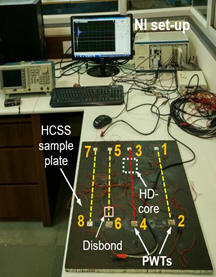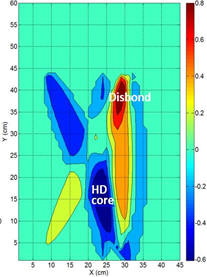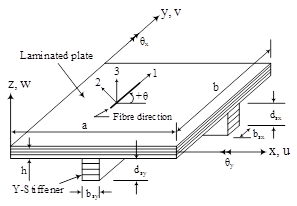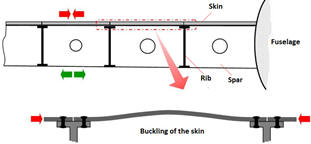| Civil Engineering Department |
Indian Institute of Technology Bombay |
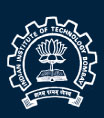 |
||||
|
Research Areas Research Group Sponsored Research Research Facilities |
Honeycomb composite sandwich structures (HCSS) are advanced composite structures, in which, thin fiber reinforced composite (FRC) skins are bonded to the two faces of lightweight and relatively thick metallic/composite honeycomb core with epoxy-adhesives. These structures are extensively used in aerospace, aeronautics, marine and automotive industries due to their effective acoustic insulation, high energy absorption capability and high strength-to-weight ratios. But operational circumstances leading to repeated loading, aging, foreign object impact or extreme load cases acting on such structures result in disbonds sustained along the skin-core interphase, which can jeopardize the safety and integrity of the whole composite structure/subsystem. Moreover, HCSS with different core densities are often used in a number of specialized applications. Such cases include those where there is a need to introduce sensors, transducers, stiffeners, fasteners, backing plates, amongst others. In these cases, high-density (HD) core sections are introduced to provide localized support. However, the propagating guided wave (GW) signals may exhibit discontinuity effects due to the presence of both disbond as well as HD-core region. Therefore, it becomes essential and challenging to accurately identify the location and size of these hidden discontinuity (disbond/HD-core) regions sustained in such heterogeneous density structures.
To meet this goal, a coordinated theoretical, numerical and experimental study has been carried out in an effort to understand the characteristics of GW propagation and its interaction with disbond and inhomogeneity in a HCSS using bonded piezoelectric. In order to accurately identify the hidden disbond and HD-core regions in the HCSS, a signal difference coefficient (SDC) algorithm based active SHM framework is proposed. The developed probability based SDC algorithm works on the basis of extracted GW features, which reflects the structural discontinuity effects. Therefore, it is expected that the study would be substantially beneficial for the entire community by reducing the risk of catastrophic failures in various aerospace, marine and automotive structures.
Stiffened laminated panels are structural components consisting of plates reinforced by a system of ribs to enhance their load carrying capacities. Plates with an array of stiffeners are commonly found in fuselage and wings of an aircraft, a ship’s hull and deck, off shore drilling rigs, pressure vessels, roofing units, launching pedestal of rocket etc. The diverse applications of such panels are found to be exposed to in-plane edge loading (compressive/tensile) in many situations. For instance, during the take-off of an aircraft, the lifting force tries to bend the wings upward. Due to this, many upper wing panels are under the application of non-uniform in-plane edge compression. Similarly, lower wing panels are under non-uniform in-plane edge tension. However, the presence of these loadings may significantly alter the free vibration response of such panels. In fact, a situation may arise wherein the natural frequency of a component becomes zero, thereby causing instability of the component at a fairly low-stress field. Hence, the elastic stability may be considered as a special case of vibration problem and such problems have been of considerable importance and interest to researchers for many years. This work is proposed to investigate the effect of different ply-angles, boundary conditions, partial/non-uniform edge loads, and different pattern of stiffeners and their positions on the vibration and stability behaviour of stiffened panels with and without cutouts.
|
|||||
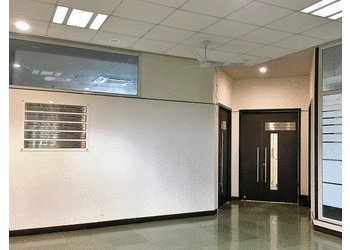
|
||||||
|
Prof. Sauvik Banerjee, Department of Civil Engineering, IIT Bombay, Powai, Mumbai 400076, Email- sauvik@civil.iitb.ac.in, Tel: +91-22-25767343. |
||||||
